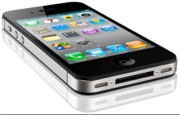iPhone
Steps for Upgrading to iOS 8
16/09/14 16:13
Here are our recommended steps for upgrading to the new operating system for your iPad, iPhone and iPod touch, iOS 8.
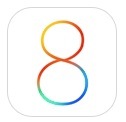
1/ check if your device is covered- here are the devices which can install iOS 8:
iPhone: 4s, 5, 5s, 5c, (the iPhone 6 and 6 Plus comes with iOS 8 already installed)
iPad: 2, 3, 4, Air
iPad mini: mini, mini with Retina Display
iPod: touch (5th generation)
2/ update your device today before iOS 8 arrives- get your device up to the latest version of iOS 7 (7.1.2) in advance of the big move to iOS 8.
3/ update your apps- that number on top of your App Store icon- deal with it! Go into the App Store and install all of the waiting updates.
4/ backup your device in iTunes on your Mac. We strongly recommend backing up your device to your Mac, as this will mean you have a complete backup in case of loss, accident or theft. Run another backup before you are tempted to upgrade to iOS 8.
5/ clear your photos from the camera roll: yes while you are at your Mac, try to keep your camera roll slimmed down by importing your photos to iPhoto and then clear the camera roll after, when it confirms that all photos have been imported. Try not to let your camera roll reach into the 1000s!
Instead, sync your favourite photos back to your device by creating albums and selecting them in iTunes.
6/ restart your device- always good to have a fresh start.
7/ make sure you plug it into the power before upgrading- don’t update on battery power (ok you can technically do this as long as you have enough battery life left, but it is safer to plug it into your adapter or Mac during the update as it is a big download!).
8/ now go ahead and upgrade- it is quicker to do this on the device, so go to Settings -> General -> Software Update.
Once Apple release iOS 8 it will appear in this section. If you see a message saying you are up to date and on 7.1.2, then the new update has not been released yet. It should arrive tomorrow evening (17th Sept).
To check out some of the highlights of iOS 8, have a look at our earlier article..

1/ check if your device is covered- here are the devices which can install iOS 8:
iPhone: 4s, 5, 5s, 5c, (the iPhone 6 and 6 Plus comes with iOS 8 already installed)
iPad: 2, 3, 4, Air
iPad mini: mini, mini with Retina Display
iPod: touch (5th generation)
2/ update your device today before iOS 8 arrives- get your device up to the latest version of iOS 7 (7.1.2) in advance of the big move to iOS 8.
3/ update your apps- that number on top of your App Store icon- deal with it! Go into the App Store and install all of the waiting updates.
4/ backup your device in iTunes on your Mac. We strongly recommend backing up your device to your Mac, as this will mean you have a complete backup in case of loss, accident or theft. Run another backup before you are tempted to upgrade to iOS 8.
5/ clear your photos from the camera roll: yes while you are at your Mac, try to keep your camera roll slimmed down by importing your photos to iPhoto and then clear the camera roll after, when it confirms that all photos have been imported. Try not to let your camera roll reach into the 1000s!
Instead, sync your favourite photos back to your device by creating albums and selecting them in iTunes.
6/ restart your device- always good to have a fresh start.
7/ make sure you plug it into the power before upgrading- don’t update on battery power (ok you can technically do this as long as you have enough battery life left, but it is safer to plug it into your adapter or Mac during the update as it is a big download!).
8/ now go ahead and upgrade- it is quicker to do this on the device, so go to Settings -> General -> Software Update.
Once Apple release iOS 8 it will appear in this section. If you see a message saying you are up to date and on 7.1.2, then the new update has not been released yet. It should arrive tomorrow evening (17th Sept).
To check out some of the highlights of iOS 8, have a look at our earlier article..
Comments
Apple Press Event Update: new iPhone 6, ApplePay and the Apple Watch
10/09/14 09:20
Yesterday’s press event brought two new iPhones, a new Apple payment system and the rumoured Apple Watch. Here is a quick rundown…
Apple iPhone:
Apple’s new iPhone lineup will consist of 4 models: the current iPhone 5s and 5c, plus the new iPhone 6 and iPhone 6 Plus-
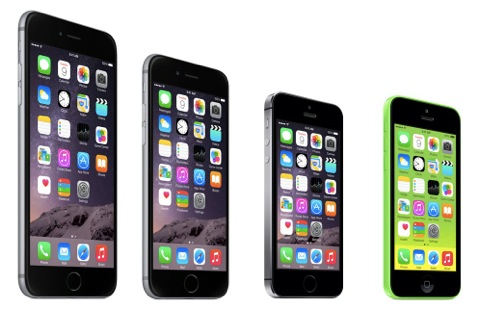
The new iPhone 6 and 6 Plus have larger displays than the 5s and 5c. The iPhone 6 has a 4.7 inch screen and the iPhone Plus comes in at 5.5 inches.
Both new models also come with a faster A8 chip, and better battery life. In fact Apple claim the new batterie will last over 50% longer. In some uses, the iPhone 6 Plus has double the battery life of an iPhone 5s.
One of the key differences will be the number of rows on the home screen- the 6 and 6 Plus fit 6 rows of icons compared to 5 on an iPhone 5s/c. This also applies to the apps- for example when using landscape mode in Mail, you can view your message on the right and a list of your emails on the left.
An unlocked iPhone 6 starts at €699, an iPhone 6 Plus starts at €799.(in the US, phones bought under contact will be $199/$299).
More details here.
Apple Pay:
Apple Pay will launch in the US first in October, and will allow for payments through your iPhone 6 using Touch ID, the fingerprint sensor on your iPhone.
It will be as simple as holding the iPhone near the store’s contact point with your finger resting on the home button- payment received!
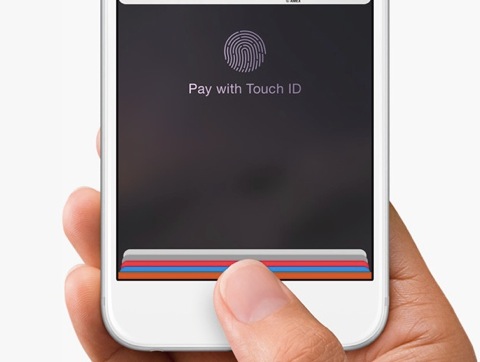
Apple Pay will only be available on the iPhone 6 (and Apple Watch in 2015). Visa, MasterCard and American Express have joined the new system, and retailers such as Walgreens, Macy’s, Staples and Disney have all signed up.
Apple plan to spread this to other countries in the coming months.
More details here.
Apple Watch:
The Apple Watch was announced today but it is due to start shipping in early 2015 in the US (sorry- no Christmas presents here&hellip . The Watch comes in three ranges:
. The Watch comes in three ranges:
- Watch: stainless steel cases, and a range of bands
- Watch Sport: aluminium case, colourful bands
- Watch Edition: gold cases, crafted bands and closures

There will also be two height sizes (traditionally seen as men and women’s styles) and a large range of bands, making the Apple Watch the most customisable of any Apple product.
In terms of features, you can read and send texts on an Apple Watch, make and receive calls, read emails, use Maps, view your calendar and reminders. There will also be lots of other Apps, from Apple and other companies.
But one of the main features is the health app- Activity checks you movements and records your walks, runs, and how often you have stood up from your desk to stretch! The back of the watch has sensors which can check your heart rate and give you feedback in the apps.
Inputting information and browsing is done using voice (Siri), the Digital Crown on the side (looks like the button to wind a classic watch) or by touching the screen. The Watch will also vibrate or make sounds to alert you to messages and reminders.
The Apple Watch requires an iPhone 5 or above, and pairs with the phone to give it its internet connection.
More details here.
Plus:
U2 have launched their new album, "Songs of Innocence", and it is free to everyone with an iTunes account!
Here are a few key dates:
Sept 12th: orders will begin for the iPhone 6 and 6 Plus in the US and UK
Sept 17th: iOS 8, the new software for the iPhone, iPod touch and iPad, will be available as a free download form Apple
Sept 19th: iPhone 6 and 6 Plus go on sale in the US and UK
Sept 26th: orders will begin for the iPhone 6 and 6 Plus in Ireland
October: there will be an iOS update to launch Apple Pay in the US
October: Apple are likely to release OS X Yosemite, the latest operating system for the Mac
Start of 2015: the Apple watch will go on sale in the US
Hope this helps to give you a good summary of what’s coming later this year and in 2015.
.
Apple iPhone:
Apple’s new iPhone lineup will consist of 4 models: the current iPhone 5s and 5c, plus the new iPhone 6 and iPhone 6 Plus-

The new iPhone 6 and 6 Plus have larger displays than the 5s and 5c. The iPhone 6 has a 4.7 inch screen and the iPhone Plus comes in at 5.5 inches.
Both new models also come with a faster A8 chip, and better battery life. In fact Apple claim the new batterie will last over 50% longer. In some uses, the iPhone 6 Plus has double the battery life of an iPhone 5s.
One of the key differences will be the number of rows on the home screen- the 6 and 6 Plus fit 6 rows of icons compared to 5 on an iPhone 5s/c. This also applies to the apps- for example when using landscape mode in Mail, you can view your message on the right and a list of your emails on the left.
An unlocked iPhone 6 starts at €699, an iPhone 6 Plus starts at €799.(in the US, phones bought under contact will be $199/$299).
More details here.
Apple Pay:
Apple Pay will launch in the US first in October, and will allow for payments through your iPhone 6 using Touch ID, the fingerprint sensor on your iPhone.
It will be as simple as holding the iPhone near the store’s contact point with your finger resting on the home button- payment received!

Apple Pay will only be available on the iPhone 6 (and Apple Watch in 2015). Visa, MasterCard and American Express have joined the new system, and retailers such as Walgreens, Macy’s, Staples and Disney have all signed up.
Apple plan to spread this to other countries in the coming months.
More details here.
Apple Watch:
The Apple Watch was announced today but it is due to start shipping in early 2015 in the US (sorry- no Christmas presents here&hellip
- Watch: stainless steel cases, and a range of bands
- Watch Sport: aluminium case, colourful bands
- Watch Edition: gold cases, crafted bands and closures

There will also be two height sizes (traditionally seen as men and women’s styles) and a large range of bands, making the Apple Watch the most customisable of any Apple product.
In terms of features, you can read and send texts on an Apple Watch, make and receive calls, read emails, use Maps, view your calendar and reminders. There will also be lots of other Apps, from Apple and other companies.
But one of the main features is the health app- Activity checks you movements and records your walks, runs, and how often you have stood up from your desk to stretch! The back of the watch has sensors which can check your heart rate and give you feedback in the apps.
Inputting information and browsing is done using voice (Siri), the Digital Crown on the side (looks like the button to wind a classic watch) or by touching the screen. The Watch will also vibrate or make sounds to alert you to messages and reminders.
The Apple Watch requires an iPhone 5 or above, and pairs with the phone to give it its internet connection.
More details here.
Plus:
U2 have launched their new album, "Songs of Innocence", and it is free to everyone with an iTunes account!
Here are a few key dates:
Sept 12th: orders will begin for the iPhone 6 and 6 Plus in the US and UK
Sept 17th: iOS 8, the new software for the iPhone, iPod touch and iPad, will be available as a free download form Apple
Sept 19th: iPhone 6 and 6 Plus go on sale in the US and UK
Sept 26th: orders will begin for the iPhone 6 and 6 Plus in Ireland
October: there will be an iOS update to launch Apple Pay in the US
October: Apple are likely to release OS X Yosemite, the latest operating system for the Mac
Start of 2015: the Apple watch will go on sale in the US
Hope this helps to give you a good summary of what’s coming later this year and in 2015.
.
Apple Press Event on 9th September: What to Expect
03/09/14 15:33
Apple announced their 9th September press event last week and there has been much speculation on what will be announced. Here is a rundown of what we expect to see:

- the one certainty is the iPhone 6: Apple have released new iPhones in the Autumn for a few years now, mostly as they need to rollout them out to all countries before the busy Christmas buying season.
- screen size: the rumours of a larger screen version seem to make sense, but not for all models. There is likely to be a top-end, larger screen version, but also a version with the same screen size as the 5s and 5c. Screen size is a personal choice, and not everyone will like the larger screen. But it does seem like the iPhone range has matured enough to introduce various models, as Apple did with the iPod in the 00s. Back then, there was just the click wheel iPod, until Apple broke out the models to introduce the mini, then nano and shuffle, followed by the iPod touch. As the iPhone matures there is likely to be this type of break-up of the range, and not just a choice of storage sizes and colours.
- iOS 8 is almost certain to be discussed too, with a launch date announced. It will be introduced with the new iPhones and will come installed on the new models. We expect iOS 8 to be a free download to current iPhone and iPad owners before the end of September. We think it is unlikely to be available on the 9th September. It is more likely to ship at the same time as the phones, possibly two weeks after the press event.
- we still think that there will be two “new” ranges of iPhone, matching this year’s 5s and 5c ranges. Although the 5c does not get as much publicity as the 5s, we still think it has been a success for Apple. Plus we have seen more and more 5c models around, possibly as it has taken a bit longer to filter through to consumers.
- we don’t expect to see OS X Yosemite released next week, and it may not be mentioned at the event. This press event is likely to focus on iOS 8, the iPhone and possibly iPods. It is not a Mac event.
- speaking of iPods, this is a crucial landmark for them. If there is no mention of the range, and if no other iPod announcements before Christmas, then we can say that the iPod range is no longer a focus for Apple. At one time iPods were one of the major product lines, but with the iPhone and possibly a wrist based device, its place it in doubt.
- speaking of wrist gadgets- this is the one to watch. If Apple announces a wrist (watch is the wrong word) device, this for us sits on the iPod’s patch Imagine a wrist device with Bluetooth headset; this becomes the new high end iPod. We don’t expect the iPod range to disappear any time soon- Apple have even been slow killing off the click wheel iPod, but we do think it will continue to slip down the pecking order and simply be maintained.
- Apple also knows how to spread announcements out, so we don’t think that iPads will be launched next week. New iPhones and a wrist device is enough for one day. But we do expect iPads before Christmas, possibly at a second event in October.
- we also expect bumps for the MacBook Airs soon (and Mac minis!), but this is not a Mac event.
- Apple TV: This is a slow burner for Apple as they have focussed on content over the last few years, and the hardware has only received two revisions since its launch in 2007 (2010, 2012). We hope to see a new version, and it would fit nicely into the Christmas market..

- the one certainty is the iPhone 6: Apple have released new iPhones in the Autumn for a few years now, mostly as they need to rollout them out to all countries before the busy Christmas buying season.
- screen size: the rumours of a larger screen version seem to make sense, but not for all models. There is likely to be a top-end, larger screen version, but also a version with the same screen size as the 5s and 5c. Screen size is a personal choice, and not everyone will like the larger screen. But it does seem like the iPhone range has matured enough to introduce various models, as Apple did with the iPod in the 00s. Back then, there was just the click wheel iPod, until Apple broke out the models to introduce the mini, then nano and shuffle, followed by the iPod touch. As the iPhone matures there is likely to be this type of break-up of the range, and not just a choice of storage sizes and colours.
- iOS 8 is almost certain to be discussed too, with a launch date announced. It will be introduced with the new iPhones and will come installed on the new models. We expect iOS 8 to be a free download to current iPhone and iPad owners before the end of September. We think it is unlikely to be available on the 9th September. It is more likely to ship at the same time as the phones, possibly two weeks after the press event.
- we still think that there will be two “new” ranges of iPhone, matching this year’s 5s and 5c ranges. Although the 5c does not get as much publicity as the 5s, we still think it has been a success for Apple. Plus we have seen more and more 5c models around, possibly as it has taken a bit longer to filter through to consumers.
- we don’t expect to see OS X Yosemite released next week, and it may not be mentioned at the event. This press event is likely to focus on iOS 8, the iPhone and possibly iPods. It is not a Mac event.
- speaking of iPods, this is a crucial landmark for them. If there is no mention of the range, and if no other iPod announcements before Christmas, then we can say that the iPod range is no longer a focus for Apple. At one time iPods were one of the major product lines, but with the iPhone and possibly a wrist based device, its place it in doubt.
- speaking of wrist gadgets- this is the one to watch. If Apple announces a wrist (watch is the wrong word) device, this for us sits on the iPod’s patch Imagine a wrist device with Bluetooth headset; this becomes the new high end iPod. We don’t expect the iPod range to disappear any time soon- Apple have even been slow killing off the click wheel iPod, but we do think it will continue to slip down the pecking order and simply be maintained.
- Apple also knows how to spread announcements out, so we don’t think that iPads will be launched next week. New iPhones and a wrist device is enough for one day. But we do expect iPads before Christmas, possibly at a second event in October.
- we also expect bumps for the MacBook Airs soon (and Mac minis!), but this is not a Mac event.
- Apple TV: This is a slow burner for Apple as they have focussed on content over the last few years, and the hardware has only received two revisions since its launch in 2007 (2010, 2012). We hope to see a new version, and it would fit nicely into the Christmas market..
iPhone 5s and iPhone 5c- What You Need to Know...
11/09/13 13:59
On September 10th Apple announced two new iPhone families, replacing the iPhone 5. The two new ranges are called the iPhone 5s, the top of the range version, and the iPhone 5c, which is slightly cheaper and replaces the year-old iPhone 5.
So what is the point of two iPhone models?
Apple believes that the two models serve two groups of consumers. The new iPhone 5s is more cutting-edge and comes with some extra features. The iPhone 5c is more colourful and very similar to the iPhone 5 (which it has replaced).
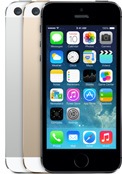
iPhone 5s
What is new about the iPhone 5s?
The phone has three internal hardware changes. The first is speed: the 5s comes with the new A7 processor inside and this promises to have double the speed of the phone it replaces (iPhone 5). It also has a new sensor inside (M7 motion coprocessor) which means the phone will act a bit like a Nike Fuelband, or any of the exercise gadgets which track your walking/running. The third, and most noted change, is the “Touch ID” fingerprint sensor on the front. The home button now recognises your finger and this takes over as the method to wake the iPhone, replacing the need to type in a 4-digit passcode. It also works when you buy apps, music, videos, books etc. You place your finger on the sensor instead of having to type your iTunes password.
The other big news is the improved camera. The new model lets you take “bursts” of images so you can capture events with lots of movement. It also allows for high-quality video, which can be slowed down into what Apple call “slo-mo” mode, without losing the quality and definition.
The iPhone 5s comes in thee colours- gold, silver and “space grey”. It also comes in three storage sizes- 16, 32 or 64GB.
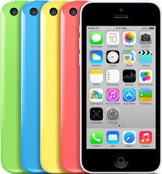
iPhone 5c
Is there anything new about the iPhone 5c compared to the iPhone 5?
The main new features are the better battery life and the new colours. The iPhone 5c comes in green, blue, red, yellow or white. The price has dropped by about $100 compared to the iPhone 5 and it is likely that this model will be the big seller due to subsidies from the carriers.
All of the other specs are the same as the iPhone 5- A6 processor, 8 megapixel camera, 4 inch retina display . It comes in two storage sizes- 16 or 32GB.
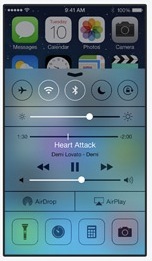
iOS 7 Control Centre
What about the iPhone 4S:
It is still around! It will be the cheapest model and will probably come free with a contract from your carrier.
What about software?
One of the announcements yesterday was about iOS 7, which is going to be released next Wednesday, Sept 18th. This all be a free download and can be installed on any iPhone 4 or later, iPad 2 or later and on an iPod touch 5. It will also come as the operating system on the new iPhones. One of the big features to come in iOS 7 is FaceTime audio. You will be able to call any other iOS 7 user anywhere in the world for free, using your WiFi or data package.
The biggest change for iOS 7 will be the look and feel. It is bright, colourful and is a very new design compared to your current iOS 6.
Apple also announced that it was going to start bundling a lot more software with the new iPhones. All new models can download Pages, Numbers, Keynote, iPhoto and iMovie for free. Up to now each of these were separate purchases from the App Store.
What about pricing?
The new prices were announced, but they are US-only for the moment. International prices will emerge as Apple start to roll-out the handsets later this month.
Here are the US prices for the iPhones with a 2 year contract:
iPhone 5s:
16GB $199
32GB $299
64GB $399
iPhone 5c:
16GB $99
32GB $199
iPhone 4S:
8GB Free
UK prices for the unlocked model:
iPhone 5s:
16GB £549
32GB £629
64GB £709
iPhone 5c:
16GB £469
32GB £549
iPhone 4S:
8GB £349
What about those cases?
Apple also spent a bit of time highlighting the new cases for the iPhone 5s and iPhone 5c. There are six colours for the iPhone 5s, all made from leather, including a (RED) edition:
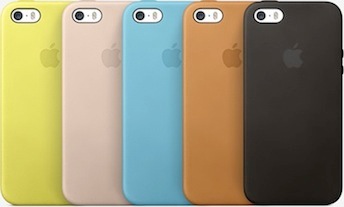

For the iPhone 5c, there are six rubber cases with a new open design at the back:
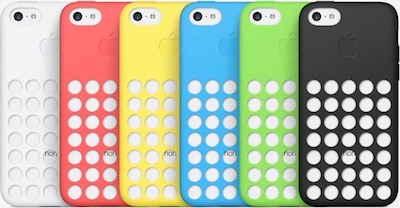
When will the new iPhones be available:
Customers in the US and UK can pre-order an iPhone 5c from Friday 13th September. Then both the iPhone 5s and 5c go on sale from Friday 20th September. Note that you can’t pre-order the iPhone 5s, probably due to limited availability at the start.
Anything else I should know?
The “s” in iPhone 5s and the “c” in iPhone 5c are both lowercase. Just saying.
.
So what is the point of two iPhone models?
Apple believes that the two models serve two groups of consumers. The new iPhone 5s is more cutting-edge and comes with some extra features. The iPhone 5c is more colourful and very similar to the iPhone 5 (which it has replaced).

iPhone 5s
What is new about the iPhone 5s?
The phone has three internal hardware changes. The first is speed: the 5s comes with the new A7 processor inside and this promises to have double the speed of the phone it replaces (iPhone 5). It also has a new sensor inside (M7 motion coprocessor) which means the phone will act a bit like a Nike Fuelband, or any of the exercise gadgets which track your walking/running. The third, and most noted change, is the “Touch ID” fingerprint sensor on the front. The home button now recognises your finger and this takes over as the method to wake the iPhone, replacing the need to type in a 4-digit passcode. It also works when you buy apps, music, videos, books etc. You place your finger on the sensor instead of having to type your iTunes password.
The other big news is the improved camera. The new model lets you take “bursts” of images so you can capture events with lots of movement. It also allows for high-quality video, which can be slowed down into what Apple call “slo-mo” mode, without losing the quality and definition.
The iPhone 5s comes in thee colours- gold, silver and “space grey”. It also comes in three storage sizes- 16, 32 or 64GB.

iPhone 5c
Is there anything new about the iPhone 5c compared to the iPhone 5?
The main new features are the better battery life and the new colours. The iPhone 5c comes in green, blue, red, yellow or white. The price has dropped by about $100 compared to the iPhone 5 and it is likely that this model will be the big seller due to subsidies from the carriers.
All of the other specs are the same as the iPhone 5- A6 processor, 8 megapixel camera, 4 inch retina display . It comes in two storage sizes- 16 or 32GB.

iOS 7 Control Centre
What about the iPhone 4S:
It is still around! It will be the cheapest model and will probably come free with a contract from your carrier.
What about software?
One of the announcements yesterday was about iOS 7, which is going to be released next Wednesday, Sept 18th. This all be a free download and can be installed on any iPhone 4 or later, iPad 2 or later and on an iPod touch 5. It will also come as the operating system on the new iPhones. One of the big features to come in iOS 7 is FaceTime audio. You will be able to call any other iOS 7 user anywhere in the world for free, using your WiFi or data package.
The biggest change for iOS 7 will be the look and feel. It is bright, colourful and is a very new design compared to your current iOS 6.
Apple also announced that it was going to start bundling a lot more software with the new iPhones. All new models can download Pages, Numbers, Keynote, iPhoto and iMovie for free. Up to now each of these were separate purchases from the App Store.
What about pricing?
The new prices were announced, but they are US-only for the moment. International prices will emerge as Apple start to roll-out the handsets later this month.
Here are the US prices for the iPhones with a 2 year contract:
iPhone 5s:
16GB $199
32GB $299
64GB $399
iPhone 5c:
16GB $99
32GB $199
iPhone 4S:
8GB Free
UK prices for the unlocked model:
iPhone 5s:
16GB £549
32GB £629
64GB £709
iPhone 5c:
16GB £469
32GB £549
iPhone 4S:
8GB £349
What about those cases?
Apple also spent a bit of time highlighting the new cases for the iPhone 5s and iPhone 5c. There are six colours for the iPhone 5s, all made from leather, including a (RED) edition:


For the iPhone 5c, there are six rubber cases with a new open design at the back:

When will the new iPhones be available:
Customers in the US and UK can pre-order an iPhone 5c from Friday 13th September. Then both the iPhone 5s and 5c go on sale from Friday 20th September. Note that you can’t pre-order the iPhone 5s, probably due to limited availability at the start.
Anything else I should know?
The “s” in iPhone 5s and the “c” in iPhone 5c are both lowercase. Just saying.
.
Expect a busy Sept-Oct from Apple
26/08/13 12:16
The months of September and October and going to be big for Apple this year. Given that there have been relatively few announcements for customers in the early part of the year, with WWDC being aimed at developers, September and October promises to reshape the Apple line up.
First, we expect there to be two events between now and Christmas. Although Apple have not officially announced any event yet, it is almost certain that a Sept 10th event will see the unveiling of the new iPhone(s). We also expect the new iOS 7 to ship with the new phones, something which Apple have so far only said will happen in “Fall” 2013.
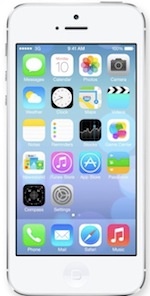
In terms of hardware, this leaves the iPads, iPods and some Macs, all of which we expect to be updated before Christmas. Our view is that Sept 10th will see two new iPhones (5S and 5C?), plus the launch of iOS 7. This seems to be plenty for a 60-90 min keynote. Then at the later event in October, we will see the annual refresh of the iPods and possibly iPads, ready for the busy Christmas season.
OS X Mavericks may not require any press event. This was previewed in June at WWDC, and so its launch date may just be mentioned at a keynote, or it will be a press release.
As for the Macs, we expect to see refreshed iMacs and MacBook Pros before the end of the year, but these two can happen without any event. There is also the question of the Mac Pro, something Apple have been making noise about ever since Phil Schiller’s sneak preview at WWDC. It could be that they will launch the Mac Pro at one of the events, simply because it makes a statement about Apple design and deserves more than a press release. Apple seem to be taking their step back into pro desktop seriously and so will want to show off this machine at a media event.
Lastly, the Apple TV. Don’t bet any money on this. It is likely that there will continue to be an iterative change to this existing product, but we don’t expect any major new hardware just yet. Unlike with mp3 players or PCs, Apple need to focus firstly on content and lastly on hardware. It is a matter of getting the content providers into place and then we have no doubt that Apple have a new hardware product to match this offering. But for now Eddie Cues torturous job of dragging all networks and content producers to the table continues..
First, we expect there to be two events between now and Christmas. Although Apple have not officially announced any event yet, it is almost certain that a Sept 10th event will see the unveiling of the new iPhone(s). We also expect the new iOS 7 to ship with the new phones, something which Apple have so far only said will happen in “Fall” 2013.

In terms of hardware, this leaves the iPads, iPods and some Macs, all of which we expect to be updated before Christmas. Our view is that Sept 10th will see two new iPhones (5S and 5C?), plus the launch of iOS 7. This seems to be plenty for a 60-90 min keynote. Then at the later event in October, we will see the annual refresh of the iPods and possibly iPads, ready for the busy Christmas season.
OS X Mavericks may not require any press event. This was previewed in June at WWDC, and so its launch date may just be mentioned at a keynote, or it will be a press release.
As for the Macs, we expect to see refreshed iMacs and MacBook Pros before the end of the year, but these two can happen without any event. There is also the question of the Mac Pro, something Apple have been making noise about ever since Phil Schiller’s sneak preview at WWDC. It could be that they will launch the Mac Pro at one of the events, simply because it makes a statement about Apple design and deserves more than a press release. Apple seem to be taking their step back into pro desktop seriously and so will want to show off this machine at a media event.
Lastly, the Apple TV. Don’t bet any money on this. It is likely that there will continue to be an iterative change to this existing product, but we don’t expect any major new hardware just yet. Unlike with mp3 players or PCs, Apple need to focus firstly on content and lastly on hardware. It is a matter of getting the content providers into place and then we have no doubt that Apple have a new hardware product to match this offering. But for now Eddie Cues torturous job of dragging all networks and content producers to the table continues..
New iOS: iOS 7 for the iPhone, iPod touch and iPad
20/06/13 13:32
Apple launched a test version of their new iOS 7 last week, giving a sneak preview of what is coming in September.
iOS 7 will be the new operating system for iPhones and iPads and is probably the biggest change since the first iPhone in 2007.
Here is a quick rundown with some snapshots of how it will look:
Home screen
The new iOS 7 has a cleaner look, with lots of clear clean lines and a less cluttered feel. Here I an example of the new home screen on an iPhone under iOS 7:
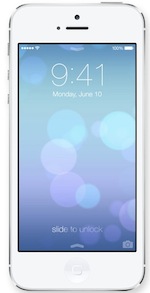

You can see above that the new look is crisp and clear.
Read More...
.
iOS 7 will be the new operating system for iPhones and iPads and is probably the biggest change since the first iPhone in 2007.
Here is a quick rundown with some snapshots of how it will look:
Home screen
The new iOS 7 has a cleaner look, with lots of clear clean lines and a less cluttered feel. Here I an example of the new home screen on an iPhone under iOS 7:


You can see above that the new look is crisp and clear.
Read More...
.
What next for Apple?
24/04/13 09:29
Yesterday’s results revealed both good and bad news for Apple. On the good side they reported $43.6 billion in revenue, compared to last year when they reported $39.2 billion for Q2. iPhone sales were up 7% year on year, with iPad sales up a huge 65%- this is the key part of the Q2 story.
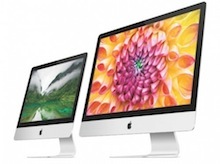
On the negative side, profits were down to $9.5 billion compared to $11.6 billion in Q2 2012. That’s quite a big drop, especially when you look at revenue increasing in the quarter. But what seems to be at play here is the success of the iPad mini. Apple say that the mini makes up the majority of all iPad sales and its margin is far lower than the larger iPad. Apple at present seem to be ok about letting their margins dip while share grows. Apple dominates the “tablet” (iPad) market and they have done this by adding the new mini to grab the smaller device market before a competitor can undermine their position. If we look back, the same happened in the iPod market in the 00s when Apple added the iPod mini, followed by the iPod nano. The smaller form appealed to consumers and it became the biggest selling model.
Good news
The good news is the iPad figure. The continuing dominance of the iPad means that Apple’s is still the default tablet. As home customers and increasingly corporate buyers move away from PCs, the iPad is becoming the device of choice. This combined with the figures for iCloud, where Apple now have 300m accounts, means that iOS is a unique environment. iTunes accounted for $2.4 billion in revenue this quarter from sales of music, apps, films and books etc.

The Mac too is holding its own, especially in turbulent times. Overall PC sales are down about 14% (according to IDC), so Apple’s relatively flat sales are a good result for the quarter. This is especially true when you consider that the iMac was not in full supply until well into the quarter, with supply problems since its December release.
Bad news
The problem for Apple may lie in what comes next. Cook mentioned that new products were coming in the autumn and this may signal a quiet quarter on the hardware front. Apple’s attention seems to now be on WWDC and software announcements, with iOS 7 and OS X 10.9 expected to be key parts of the June event.
iPhone sales will fall away in Q3 just as they always have in the past, in anticipation of the next model being announced. Customers have become very savvy at this and most people will tell you that buying an iPhone in the summer is a bad idea (unless you are being offered a good deal for the soon-to-be-replaced handset).
iPad sales will also be mixed. Speculation about the next model may drive sales down and yet the start of the education buying season, with students returning to school and university, may help balance the figures. However we still expect this to be the lowest quarter of the year for iPad and iPhone, Apple’s two strongest product categories.
Exceptions
Cook referred to new product announcements in the Autumn but there is still the possibility of a new Mac Pro being announced at WWDC. This is the logical place for such a statement. Apple has shied away from hardware at WWDC in recent years, but the Mac Pro is an inexcusable gap in the Apple Mac lineup.
There may also be some refreshing of processors in the laptop lines, possibly to boost the education season. This could wait until the Autumn, but that way all categories may be refreshed in one go, something that Apple may avoid in an attempt to spread out the good news. It’s is also worth noting that any refresh of Macs always happen after any back to education sales offers. This may mean any changes come late in the quarter.
Outlook
Overall we expect Q3 to be about strategy- the next version of iOS and OS X setting the pace for the year. Apple have already indicated that revenue will be between $33.5 and $35.5 billion with a gross margin of 36-37%, lower than in Q2. In Q3 of last year sales were at $35 billion and so ben Apple expect a flat year over year set of results.
However this does all lead us to Q4 and more importantly Q1 2014, where new products come on stream. Q1 is Apple’s Christmas quarter and is always a blow-out set of results and we see no reason why this will not continue. Indeed Cook referred to a new product segment in the conference call and that means one thing- a new leg on the Apple table. Apart from a revised iPhone and iPad, and updated Macs and iPods, it looks certain that they will enter a new market before the end of the calendar year. If investors are looking for signs of growth for the end of 2013 and into 2014, Cook presented them with a perfect hint to what’s next for Apple..

On the negative side, profits were down to $9.5 billion compared to $11.6 billion in Q2 2012. That’s quite a big drop, especially when you look at revenue increasing in the quarter. But what seems to be at play here is the success of the iPad mini. Apple say that the mini makes up the majority of all iPad sales and its margin is far lower than the larger iPad. Apple at present seem to be ok about letting their margins dip while share grows. Apple dominates the “tablet” (iPad) market and they have done this by adding the new mini to grab the smaller device market before a competitor can undermine their position. If we look back, the same happened in the iPod market in the 00s when Apple added the iPod mini, followed by the iPod nano. The smaller form appealed to consumers and it became the biggest selling model.
Good news
The good news is the iPad figure. The continuing dominance of the iPad means that Apple’s is still the default tablet. As home customers and increasingly corporate buyers move away from PCs, the iPad is becoming the device of choice. This combined with the figures for iCloud, where Apple now have 300m accounts, means that iOS is a unique environment. iTunes accounted for $2.4 billion in revenue this quarter from sales of music, apps, films and books etc.

The Mac too is holding its own, especially in turbulent times. Overall PC sales are down about 14% (according to IDC), so Apple’s relatively flat sales are a good result for the quarter. This is especially true when you consider that the iMac was not in full supply until well into the quarter, with supply problems since its December release.
Bad news
The problem for Apple may lie in what comes next. Cook mentioned that new products were coming in the autumn and this may signal a quiet quarter on the hardware front. Apple’s attention seems to now be on WWDC and software announcements, with iOS 7 and OS X 10.9 expected to be key parts of the June event.
iPhone sales will fall away in Q3 just as they always have in the past, in anticipation of the next model being announced. Customers have become very savvy at this and most people will tell you that buying an iPhone in the summer is a bad idea (unless you are being offered a good deal for the soon-to-be-replaced handset).
iPad sales will also be mixed. Speculation about the next model may drive sales down and yet the start of the education buying season, with students returning to school and university, may help balance the figures. However we still expect this to be the lowest quarter of the year for iPad and iPhone, Apple’s two strongest product categories.
Exceptions
Cook referred to new product announcements in the Autumn but there is still the possibility of a new Mac Pro being announced at WWDC. This is the logical place for such a statement. Apple has shied away from hardware at WWDC in recent years, but the Mac Pro is an inexcusable gap in the Apple Mac lineup.
There may also be some refreshing of processors in the laptop lines, possibly to boost the education season. This could wait until the Autumn, but that way all categories may be refreshed in one go, something that Apple may avoid in an attempt to spread out the good news. It’s is also worth noting that any refresh of Macs always happen after any back to education sales offers. This may mean any changes come late in the quarter.
Outlook
Overall we expect Q3 to be about strategy- the next version of iOS and OS X setting the pace for the year. Apple have already indicated that revenue will be between $33.5 and $35.5 billion with a gross margin of 36-37%, lower than in Q2. In Q3 of last year sales were at $35 billion and so ben Apple expect a flat year over year set of results.
However this does all lead us to Q4 and more importantly Q1 2014, where new products come on stream. Q1 is Apple’s Christmas quarter and is always a blow-out set of results and we see no reason why this will not continue. Indeed Cook referred to a new product segment in the conference call and that means one thing- a new leg on the Apple table. Apart from a revised iPhone and iPad, and updated Macs and iPods, it looks certain that they will enter a new market before the end of the calendar year. If investors are looking for signs of growth for the end of 2013 and into 2014, Cook presented them with a perfect hint to what’s next for Apple..
Next iteration of the iPhone: reality vs fantasy
05/03/13 10:24
As we approach the summer, rumours of the next iPhone are beginning to emerge. The problem is that there will be two sets of expectations: those who know the pattern that Apple follows, and those who now expect a “brand new” iPhone.
If we look back at the history of the iPhone we see that it has always followed a pattern- a changed phone form followed by a iterative update. This was the new iPhone 3G followed by the updated 3GS, the newly shaped iPhone 4 followed by the refined iPhone 4S. Therefore all signals point to the iPhone 5, introduced last autumn, being followed by a new iPhone 5S this summer/autumn. The iPhone 5 was a new lighter version, with a larger screen faster chip and support for the new LTE/4G networks. The expectations for this autumn should be an updated version of this design, with a faster chip inside, better camera and new version of iOS.
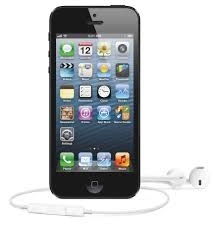
The problem is that this does not stop the fanciful comments about the need for a brand new iPhone 6 now, breaking the well trodden path which Apple has set out over the last six years. The argument is that Apple has lost ground against Android and so needs a new form-factor, a new style of phone, along with a new cheap iPhone for a lower price point. But this has no basis in fact- the iPhone 5 was the top selling smartphone worldwide at the end of 2012 (12.6%), and the older iPhone 4S was in second place(8%), with the Phone 4 (first released in 2010) still in the top 5.
It is likely that Apple will continue to strengthen its position with the next iPhone, but the view that they need to release a brand new shape, or a “revolutionary” new phone, flies in the face of the stats. .
If we look back at the history of the iPhone we see that it has always followed a pattern- a changed phone form followed by a iterative update. This was the new iPhone 3G followed by the updated 3GS, the newly shaped iPhone 4 followed by the refined iPhone 4S. Therefore all signals point to the iPhone 5, introduced last autumn, being followed by a new iPhone 5S this summer/autumn. The iPhone 5 was a new lighter version, with a larger screen faster chip and support for the new LTE/4G networks. The expectations for this autumn should be an updated version of this design, with a faster chip inside, better camera and new version of iOS.

The problem is that this does not stop the fanciful comments about the need for a brand new iPhone 6 now, breaking the well trodden path which Apple has set out over the last six years. The argument is that Apple has lost ground against Android and so needs a new form-factor, a new style of phone, along with a new cheap iPhone for a lower price point. But this has no basis in fact- the iPhone 5 was the top selling smartphone worldwide at the end of 2012 (12.6%), and the older iPhone 4S was in second place(8%), with the Phone 4 (first released in 2010) still in the top 5.
It is likely that Apple will continue to strengthen its position with the next iPhone, but the view that they need to release a brand new shape, or a “revolutionary” new phone, flies in the face of the stats. .
It's About Innovation and Increments, Not Market Demands
29/01/13 22:38
Apple has always been a company which steadily improved products. Year on year advances and changes, with well chosen launches and introductions for new technology. So how did it reach a point where some members of the press suggest that Apple *need* a brand new product now, saying that their future growth and profits depend on this?
For example, one analyst is quoted as saying “to re-accelerate growth, Apple likely needs to launch new products…” [link]. However this is simply untrue. In the past, Apple has steadily grown through incremental changes, launching a product and then following up with year on year changes to refine and improve this product segment. The major innovation, which breaks up an existing market and redefine its direction, is the exception and not the standard. The iPod, the iPad and iPhone all came years apart and after the initial launch, Apple would improve this with changes and innovation by adapting the improving its product to stay ahead of the competition.

The iPod is a classic example of this. The original iPod was introduced in 2001 and did not receive huge acclaim at the start. Instead its popularity grew as Apple modified the design, with incremental changes and the parallel changes to iTunes. Each year in recent times there have been new iPods, not redefining the industry, but keeping the iPod ahead of all competitors. Even today the iPod dominates the digital music market.
The same pattern has been adopted for the iPhone and iPad, with yearly updates, improving and adding features with each new model. So why do so many analysts demand completely new products from Apple, as if this was the general driver for the company’s growth? For a company which launched two game changing products in the last six years (iPhone and iPad) why does anyone expect Apple to launch a new product frequently?
This is partly due to simple laziness. We believe that many of these analysts don’t understand Apple’s history and only know the headlines. They believe that the iPod, Mac, iPhone and iPad came from an innovation production-line and therefore there must be another new gadget ready in the automatic pipeline. Talk of a new Apple TV set shows this- an ill-conceived idea that Apple should enter this mature market. This makes no sense, as the margins in the this market are low and Apple are far more likely to enter a market which it sees as where we are heading rather than a market that has already existed for years.
It is entirely possible that Apple will launch a new product, possibly in 2013, but they will only do this when the product is right, when it is ready to launch (I.e. high quality and refined) and not when the market demands a new “innovation” from them. Apple has never reacted to expectations, instead choosing to enter at a disruptive moment, changing the direction of a product category or creating a grand new segment.
Apple constantly innovate; but this does not have to mean brand new products in new markets at regular intervals. In fact this type of predictable schedule defeats the essence of innovation and the flexibility that Apple needs to surprise and delight consumers. .
For example, one analyst is quoted as saying “to re-accelerate growth, Apple likely needs to launch new products…” [link]. However this is simply untrue. In the past, Apple has steadily grown through incremental changes, launching a product and then following up with year on year changes to refine and improve this product segment. The major innovation, which breaks up an existing market and redefine its direction, is the exception and not the standard. The iPod, the iPad and iPhone all came years apart and after the initial launch, Apple would improve this with changes and innovation by adapting the improving its product to stay ahead of the competition.

The iPod is a classic example of this. The original iPod was introduced in 2001 and did not receive huge acclaim at the start. Instead its popularity grew as Apple modified the design, with incremental changes and the parallel changes to iTunes. Each year in recent times there have been new iPods, not redefining the industry, but keeping the iPod ahead of all competitors. Even today the iPod dominates the digital music market.
The same pattern has been adopted for the iPhone and iPad, with yearly updates, improving and adding features with each new model. So why do so many analysts demand completely new products from Apple, as if this was the general driver for the company’s growth? For a company which launched two game changing products in the last six years (iPhone and iPad) why does anyone expect Apple to launch a new product frequently?
This is partly due to simple laziness. We believe that many of these analysts don’t understand Apple’s history and only know the headlines. They believe that the iPod, Mac, iPhone and iPad came from an innovation production-line and therefore there must be another new gadget ready in the automatic pipeline. Talk of a new Apple TV set shows this- an ill-conceived idea that Apple should enter this mature market. This makes no sense, as the margins in the this market are low and Apple are far more likely to enter a market which it sees as where we are heading rather than a market that has already existed for years.
It is entirely possible that Apple will launch a new product, possibly in 2013, but they will only do this when the product is right, when it is ready to launch (I.e. high quality and refined) and not when the market demands a new “innovation” from them. Apple has never reacted to expectations, instead choosing to enter at a disruptive moment, changing the direction of a product category or creating a grand new segment.
Apple constantly innovate; but this does not have to mean brand new products in new markets at regular intervals. In fact this type of predictable schedule defeats the essence of innovation and the flexibility that Apple needs to surprise and delight consumers. .
Google vs Samsung- bring it on...
08/12/12 15:31
Please don’t tell me there isn’t someone at Google HQ thinking, “Samsung; they owe us everything!
Google developed a free operating system for smartphones (later for tablets) and Samsung are currently riding this wave, making billions off the back of their OS. Sure, Samsung make great hardware, but would they have sold as many phones with Windows as the operating system- of course not!


So this poses the question- not if but when the relationship turns sour, what will Google’s new terms be? Right now Samsung make the profit and Google provide the fuel. But what happens when Google comes to look for its cut and insists that it is time for a share in the rewards?
There are three possibilities for 2013-4:
Hypothesis 1: Google ask Samsung and all Android smartphones (plus tablets) for a license fee. Google decides that if one of the main selling points for a Samsung smartphone is their Android operating system, why shouldn’t they get their fair share? Why not charge Samsung 30 dollars per handset and turn Android into the world’s most profitable smartphone operating system? Sane for HTC and all other smartphone manufacturers. Now that Android is established in first or second place throughout the world, why shouldn’t Google now take its fair share of the margins in this market?
Hypothesis Two: Google develops its own handsets and overtakes Samsung, offering a direct rival to the iPhone, where Apple control handset and OS together. A true Google-Android phone could be optimised for speed and features, with Google preparing their handsets to match the latest release of their Android OS. Samsung becomes the also-rans, catching up with Google’s cutting edge handsets. Google have started down this route, but what happens if this becomes their main goal- to take on Samsung directly?
Hypothesis Three: Android is split into two versions, with the enhanced version being available on Google handsets. The second version, provided to third parties might lack certain features. An example of this was Google Maps on the iPhone, which lacked navigation. Instead Google kept these features for the Android version, thus leaving the iPhone Maps experience was lacking. So what if Google began to build in these new features to their Goole handsets, but delaying them in the Android versions distributed to Samsung and HTC?
Who knows what 2013 will bring, but with Samsung becoming the largest smartphone manufacturer off Google’s OS development, please don’t tell me someone at Google has not considered these options….
Google developed a free operating system for smartphones (later for tablets) and Samsung are currently riding this wave, making billions off the back of their OS. Sure, Samsung make great hardware, but would they have sold as many phones with Windows as the operating system- of course not!


So this poses the question- not if but when the relationship turns sour, what will Google’s new terms be? Right now Samsung make the profit and Google provide the fuel. But what happens when Google comes to look for its cut and insists that it is time for a share in the rewards?
There are three possibilities for 2013-4:
Hypothesis 1: Google ask Samsung and all Android smartphones (plus tablets) for a license fee. Google decides that if one of the main selling points for a Samsung smartphone is their Android operating system, why shouldn’t they get their fair share? Why not charge Samsung 30 dollars per handset and turn Android into the world’s most profitable smartphone operating system? Sane for HTC and all other smartphone manufacturers. Now that Android is established in first or second place throughout the world, why shouldn’t Google now take its fair share of the margins in this market?
Hypothesis Two: Google develops its own handsets and overtakes Samsung, offering a direct rival to the iPhone, where Apple control handset and OS together. A true Google-Android phone could be optimised for speed and features, with Google preparing their handsets to match the latest release of their Android OS. Samsung becomes the also-rans, catching up with Google’s cutting edge handsets. Google have started down this route, but what happens if this becomes their main goal- to take on Samsung directly?
Hypothesis Three: Android is split into two versions, with the enhanced version being available on Google handsets. The second version, provided to third parties might lack certain features. An example of this was Google Maps on the iPhone, which lacked navigation. Instead Google kept these features for the Android version, thus leaving the iPhone Maps experience was lacking. So what if Google began to build in these new features to their Goole handsets, but delaying them in the Android versions distributed to Samsung and HTC?
Who knows what 2013 will bring, but with Samsung becoming the largest smartphone manufacturer off Google’s OS development, please don’t tell me someone at Google has not considered these options….
iPhone 5 Launches in Ireland
28/09/12 12:10
The new iPhone arrives in Ireland today, although don’t expect to walk into a store to pick one up. Supply will be very limited for the first few weeks, so here is our advice on where to purchase:
1/ start with your carrier- talk to Vodafone, O2 or 3 or whichever provider you are with, and check to see if you are entitled to an upgrade. It will generally have to have been 18-24 months since your last new phone. For example, if you are only 6 months into your current contract, you are unlikely to receive a new phone at the fully subsidised price.



2/ think of other carriers- if you find that you are at the end of your current contract, consider moving. If you have a good signal in your area from most of the providers, shop around. New customers may get a good deal by switching to a new carrier.
3/ buy from Apple [click here for details]- well maybe not. Problem is that an unlocked and unsubsidised iPhone 5 will cost you far more than a phone subsidised as part of a contract. The cheapest iPhone 5 is €679 euro (16GB), rising to €789 (32GB) or €899 (64GB). These things are mini-computers, so expect to pay good money for them as stand-alone products.
Here are a few contact numbers to help you start your search:
Vodafone- 1907
O2- 1909
3- 1800 949 546
eMobile- 1800 283 091
You may also consider getting the iPhone 4S, especially if you are still using an older iPhone which is no longer supported with software updates. The 4S can run the new iOS 6 software and will now be reduced in price. We expect the carriers to offer some free iPhone 4S packages due to the iPhone 5 launch.
1/ start with your carrier- talk to Vodafone, O2 or 3 or whichever provider you are with, and check to see if you are entitled to an upgrade. It will generally have to have been 18-24 months since your last new phone. For example, if you are only 6 months into your current contract, you are unlikely to receive a new phone at the fully subsidised price.
2/ think of other carriers- if you find that you are at the end of your current contract, consider moving. If you have a good signal in your area from most of the providers, shop around. New customers may get a good deal by switching to a new carrier.
3/ buy from Apple [click here for details]- well maybe not. Problem is that an unlocked and unsubsidised iPhone 5 will cost you far more than a phone subsidised as part of a contract. The cheapest iPhone 5 is €679 euro (16GB), rising to €789 (32GB) or €899 (64GB). These things are mini-computers, so expect to pay good money for them as stand-alone products.
Here are a few contact numbers to help you start your search:
Vodafone- 1907
O2- 1909
3- 1800 949 546
eMobile- 1800 283 091
You may also consider getting the iPhone 4S, especially if you are still using an older iPhone which is no longer supported with software updates. The 4S can run the new iOS 6 software and will now be reduced in price. We expect the carriers to offer some free iPhone 4S packages due to the iPhone 5 launch.
iPhone 5 arrives this week
24/09/12 14:27
The new iPhone 5 is to be launched this Friday in Ireland. Looking at the carriers’ websites you would wonder if it is launching at all! O2 do not have any mention of the new phone on their homepage. Vodafone and eMobile have a “coming soon” notice, but no details of pricing and availability.
“3” have the best information, with a page dedicated to the iPhone 5 and details of plans and phone costs:
http://shop.three.ie/catalogue/products/iphone
They will sell the iPhone 5 on prepay for €659, whereas the bill-pay price plans have various costs, such as €40.66 per month and the iPhone for €319, or €60.99 per month and the phone for €269 (both prices based on 18 month contract).
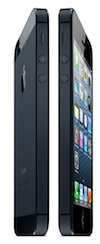
As in the past, it looks likely that the iPhone 5 will cost between €200-300 euro on an 24 month contact, based on a €50-60 per month tariff. Apple’s website does not list prices yet, such as unlocked handsets, which are likely to be available from the Irish Apple Store:
http://store.apple.com/ie/browse/home/shop_iphone/family/iphone
The number of handsets available on Friday is likely to be small due to the worldwide demand. Apple are launching the iPhone 5 in 21 other counties on Friday, and so the chances of getting a phone on the day may be slim!.
“3” have the best information, with a page dedicated to the iPhone 5 and details of plans and phone costs:
http://shop.three.ie/catalogue/products/iphone
They will sell the iPhone 5 on prepay for €659, whereas the bill-pay price plans have various costs, such as €40.66 per month and the iPhone for €319, or €60.99 per month and the phone for €269 (both prices based on 18 month contract).

As in the past, it looks likely that the iPhone 5 will cost between €200-300 euro on an 24 month contact, based on a €50-60 per month tariff. Apple’s website does not list prices yet, such as unlocked handsets, which are likely to be available from the Irish Apple Store:
http://store.apple.com/ie/browse/home/shop_iphone/family/iphone
The number of handsets available on Friday is likely to be small due to the worldwide demand. Apple are launching the iPhone 5 in 21 other counties on Friday, and so the chances of getting a phone on the day may be slim!.
iPhone review from 2007
09/02/12 17:49
We thought you need a bit of humour, so here is the Sunday Business Post’s review of the iPhone from 2007, just as it was about to be launched in Europe. We particularly like the references to “inevitable” scratches to the glass, the view that the iPhone will be “largely ignored” and that apparently Nokia and Sony-Ericsson will wipe the iPhone when it comes to music! Enjoy!
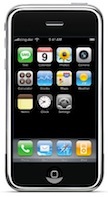
Reality Bytes: iPhone’s chances are doubtful in Europe
Sunday, June 24, 2007 - By Adrian Weckler
.

Reality Bytes: iPhone’s chances are doubtful in Europe
Sunday, June 24, 2007 - By Adrian Weckler
Later this week, Apple will release the year’s most-hyped gadget, the iPhone.
It could prove reasonably popular in the US, a low-tech cellular backwater where people still pull aerials out of their ‘cellphones’ and have to pay to accept calls.
In more modern Europe, the iPhone will be largely ignored.
There are several reasons for this. First, texting on the iPhone will be very difficult; it has no buttons and will have a Qwerty keyboard touchscreen layout, so thumbs cannot be used.
Secondly, there’s the touchscreen format itself. Despite its announcement that this will be glass and not plastic, irritating smudges and scratches are inevitable.
Then there’s the iPhone’s technology - or lack of it. Incredibly, the gadget has been made as a low-tech slow-band GPRS unit.
So browsing the internet on it - which is what it is trumpeting as a key feature - will take ages. Activities such as watching YouTube will prove juddery and stopstart. Then there is its music facility.
From what we know, there is no possibility of downloading music on it.
Instead, it will need to be connected to a computer anytime one wants to get music on or off it.
This is miles behind current technology and will certainly not appeal to the likes of Vodafone, O2 or 3, for whom revenue from music downloads is becoming crucial to their business models.
Ironically, in Ireland this could leave the iPhone’s success in the hands of Meteor, the only non-3G network which doesn’t have a big business in downloading music.
But a €600 phone on Meteor? The network of cheap calls, free texts and pre-paid customers?
That is a strange proposition.
It seems likely that a core of Apple fans will rush to buy the iPhone when it launches in Europe, whenever that is .
But this is a small number of people. With a hatful of powerful new music phones due out later this year from Sony Ericsson and Nokia - which can download music from revenue-thirsty operators - the iPhone’s chances in Europe look very weak, to say the least.
.
What a Difference 5 Years Makes…
08/02/12 12:34
Amazing what five years does. In the first half of 2007 Apple did not sell a mobile phone. In 2012, they control 75% of the profits of the entire mobile phone industry, and 40% of all revenues. This is today’s chart from Business Insider:

This shows two things. Firstly how Apple have come to dominate the industry, and they do this selling one model of phone, in three flavours (iPhone 4S, 4 and 3GS). The majority of their units and revenue come from just one model of iPhone, the new iPhone 4S. Apple don’t produce a myriad of handsets and configurations, and this helps to sharpen their image in the market. Everyone knows about the iPhone and most people either have one or intend to get one.
Secondly, Apple’s profit level on these phones far exceeds any other manufacturer. Many Android phone makes would envy the margins that Apple hold, while they pump pout low-cost handsets with thin dividends. Apple makes less than 10% of the total handsets sold, and yet rake in 75% of all of the profits.
It is an amazing story and shows just how far Apple Inc. have moved in the first five years. They have a sharp position in a crowded market, but manage to make their iPhone business one of the most profitable in the tech sector..

This shows two things. Firstly how Apple have come to dominate the industry, and they do this selling one model of phone, in three flavours (iPhone 4S, 4 and 3GS). The majority of their units and revenue come from just one model of iPhone, the new iPhone 4S. Apple don’t produce a myriad of handsets and configurations, and this helps to sharpen their image in the market. Everyone knows about the iPhone and most people either have one or intend to get one.
Secondly, Apple’s profit level on these phones far exceeds any other manufacturer. Many Android phone makes would envy the margins that Apple hold, while they pump pout low-cost handsets with thin dividends. Apple makes less than 10% of the total handsets sold, and yet rake in 75% of all of the profits.
It is an amazing story and shows just how far Apple Inc. have moved in the first five years. They have a sharp position in a crowded market, but manage to make their iPhone business one of the most profitable in the tech sector..
Sony vs Apple
01/02/12 14:38
John Gruber, of Daring Fireball, has summed up all that is wrong in the technology industry, and just how right Apple have been in their positioning and timing.
When Apple launched the iPhone in 2007, they knew this would hit sales of the iPod. In fact during the 2007 keynote, Jobs stated that the iPhone was three devices in one: an iPod, a phone and an internet device. Many CEOs would have worried about cannibalising their own products, but as Gruber points out, “Apple is skating to where the puck is heading; Sony is skating to where the puck is at the moment.”
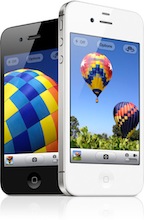
Sony are looking to a drop in camera sales, probably directly dented by the great camera in the new iPhone 4S. How many iPhone users still buy a separate point and shoot camera, now that the 4S comes with an 8 megapixel camera? Sony still focusses on separate devices, instead of going where the market is aiming for. They are chasing the model of the past, and not moving to where people will be in five years time..
When Apple launched the iPhone in 2007, they knew this would hit sales of the iPod. In fact during the 2007 keynote, Jobs stated that the iPhone was three devices in one: an iPod, a phone and an internet device. Many CEOs would have worried about cannibalising their own products, but as Gruber points out, “Apple is skating to where the puck is heading; Sony is skating to where the puck is at the moment.”

Sony are looking to a drop in camera sales, probably directly dented by the great camera in the new iPhone 4S. How many iPhone users still buy a separate point and shoot camera, now that the 4S comes with an 8 megapixel camera? Sony still focusses on separate devices, instead of going where the market is aiming for. They are chasing the model of the past, and not moving to where people will be in five years time..
iPhone 5- coming soon, maybe or not...
23/06/11 16:38
TweetWe have read a number of news articles in recent days, such as the article from Bloomberg, about the arrival of an iPhone 5 in September. It might be a good time to look at what happens in the Apple calendar and how these things work out.
Firstly, Apple have always held an autumn event which focussed on the launch of new music devices. The Christmas market is huge for Apple, and for the past few years they have launched new iPod nanos, touch and shuffle in the autumn, just in time for this peak buying season. This is as predictable as the seasons- September is Apple music device month, and sometimes a new Apple TV may be thrown in for good measure.
.
Find My iPhone- essential kit for all iOS devices
16/06/11 14:41
Opinion: The Fall of Nokia
09/02/11 13:27
The Mac Information Christmas Guide
04/12/10 13:48
Check out our 2010 Christmas Gift Guide, with a look at what we believe to be the best Apple products. We have chosen our favourite Mac, iPods, iPhone and iPad models, which may help you choose the best gadget!
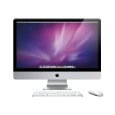
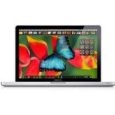

Click here for details.



Click here for details.
Watch out for Black Friday
17/11/10 16:27
Black Friday is a traditional sales day in the US, and over the last few years, some of the discounts available to US shopper have also been available in the UK and Ireland. It traditionally marks the start of the Christmas buying season in the US, following the Thanksgiving holiday.
If you are in the market for a new Mac or accessory, and you can wait until November 26th, then you may get a discount.



.
If you are in the market for a new Mac or accessory, and you can wait until November 26th, then you may get a discount.



.
iPhone 4 launches in Ireland
30/07/10 13:59
What we love & hate about iOS 4
24/06/10 12:34
The new iOS 4 for the iPhone is now out and we have been working with a developer version for the last few weeks. Here is our list of our favourite and least favourite parts!

What we love...
1/ Folders- life is much simpler now, with only 2 screens worth of icons. We like to leave the front screen for the most part as Apple intended, and we now have all of screen two containing folders. Just so much more convenient to find things and organise icons.
2/ Camera zoom- ok so it is digital zoom and not true zoom, but it is great for framing a shot and having some way to focus on our subject
3/ Text character count- now we know how long our text messages are- and we like to know this
4/ Combined inbox- we love this and hated all of the old switching back and forth. We also like the threaded messages where they are grouped together when from the same conversation. Nice touch..

What we love...
1/ Folders- life is much simpler now, with only 2 screens worth of icons. We like to leave the front screen for the most part as Apple intended, and we now have all of screen two containing folders. Just so much more convenient to find things and organise icons.
2/ Camera zoom- ok so it is digital zoom and not true zoom, but it is great for framing a shot and having some way to focus on our subject
3/ Text character count- now we know how long our text messages are- and we like to know this
4/ Combined inbox- we love this and hated all of the old switching back and forth. We also like the threaded messages where they are grouped together when from the same conversation. Nice touch..
Vodafone introduce tethering...at a price
04/03/10 21:43
Vodafone have announced tethering prices for the iPhone.
1GB will cost an expensive €9.99, but 10GB will cost €19.90. This second option seems like far better value and matches Vodafone's prices for mobile broadband USB sticks.

However this compares to O2 rates, where the top plan includes 15GB for €19.99.
Here the current O2 tethering rates:
1GB - €12.50 monthly
7.5GB - €16.99 monthly
15GB - €19.99 monthly
What makes the O2 plan so cynical is that the iPHone comes with an unlimited data plan. It is just that when you use the iPHone to provide internet to your Mac or PC, they charge the tethering rates above.
Continue...
.
1GB will cost an expensive €9.99, but 10GB will cost €19.90. This second option seems like far better value and matches Vodafone's prices for mobile broadband USB sticks.

However this compares to O2 rates, where the top plan includes 15GB for €19.99.
Here the current O2 tethering rates:
1GB - €12.50 monthly
7.5GB - €16.99 monthly
15GB - €19.99 monthly
What makes the O2 plan so cynical is that the iPHone comes with an unlimited data plan. It is just that when you use the iPHone to provide internet to your Mac or PC, they charge the tethering rates above.
Continue...
.
Vodafone announce release of iPhone on March 25th
04/03/10 11:51
Vodafone have announced the release date for the iPhone on its Irish network. The iPhone is due on March 25th, and they have also released the final price plans.
Some of the prices have changed since the pre-release which began in December. Here are the full details:
Continue...
.
Some of the prices have changed since the pre-release which began in December. Here are the full details:
Continue...
.
Listening to radio on the iPhone or iPod touch
24/02/10 14:48
Many people we have spoken to have a yearning to listen to radio on their iPhone. This is not possible from a hardware point of view- there is no radio receiver in the iPhone. However you can download apps which will let you listen to radio stations using internet feeds.
One such example which we like is FStream. It is a free app, and you will need to know the address for the radio stations you wish to listen to:
http://itunes.apple.com/ie/app/fstream/id289892007?mt=8

However we have gathered a few examples:
Continue...
.
One such example which we like is FStream. It is a free app, and you will need to know the address for the radio stations you wish to listen to:
http://itunes.apple.com/ie/app/fstream/id289892007?mt=8

However we have gathered a few examples:
Continue...
.
Internet tethering problems in Ireland
12/02/10 13:24
Internet tethering on the iPhone offers the possibility of using your phone as a modem, something which is very welcome for travellers and business users. It may can reduce the number of devices you carry with you, as many people on the road would already have a USB modem, which plugs into a laptop and provides 3G data access.

Apple explain the steps required to set up internet tethering on this page, and troubleshooting tips here.
However the situation in Ireland is quite different when you go to use this feature. O2, still the only official provider of iPhones in Ireland, charge an extra fee for using tethering. Here are their current prices:
1GB O2 Advance Internet Tethering - €12.50 monthly - 1 GB usage allowance
7.5GB O2 Advance Internet Tethering - €16.99 monthly - 7.5 GB usage allowance
15GB O2 Advance Internet Tethering - €19.99 monthly - 15 GB usage allowance
Continue...
.

Apple explain the steps required to set up internet tethering on this page, and troubleshooting tips here.
However the situation in Ireland is quite different when you go to use this feature. O2, still the only official provider of iPhones in Ireland, charge an extra fee for using tethering. Here are their current prices:
1GB O2 Advance Internet Tethering - €12.50 monthly - 1 GB usage allowance
7.5GB O2 Advance Internet Tethering - €16.99 monthly - 7.5 GB usage allowance
15GB O2 Advance Internet Tethering - €19.99 monthly - 15 GB usage allowance
Continue...
.
RTÉ embrace the iPhone and iPod touch
10/02/10 15:19
One interesting development we have noticed over the last few months is RTÉ's embrace for apps on the iPhone and iPod touch. The latest application is the RTÉ news app, which is availbale for free on the iTunes App Store for Ireland. it's worth noting that if you try to buy the RTÉ News app from the US store, it costs $2.99.

The RTÉ news app is quite a simple application with two main functions: the first is top stories section which reflects the news stories on the RTÉ website. It has four sections covering news, sport, business and entertainment. The second feature is the "watch live" section, which has a video feed of RTÉ News headlines and weather. There are two other buttons at the bottom of the screen, one called "share" and one called "RTÉ Mobile". However these are just links for sharing details of the app with a friend and a link to other mobile features and applications. So on first impressions it looks as if this application has more to it, but in fact it is just a combination of the RTÉ website news, and the news video feed. Overall it is useful, if rather uninspiring. [Click here- iTunes link].
Continue...
.

The RTÉ news app is quite a simple application with two main functions: the first is top stories section which reflects the news stories on the RTÉ website. It has four sections covering news, sport, business and entertainment. The second feature is the "watch live" section, which has a video feed of RTÉ News headlines and weather. There are two other buttons at the bottom of the screen, one called "share" and one called "RTÉ Mobile". However these are just links for sharing details of the app with a friend and a link to other mobile features and applications. So on first impressions it looks as if this application has more to it, but in fact it is just a combination of the RTÉ website news, and the news video feed. Overall it is useful, if rather uninspiring. [Click here- iTunes link].
Continue...
.
Vodafone Ireland iPhone settings
05/01/10 16:17
Just in case any new Vodafone Ireland iPhone users need the details for their data and MMS settings, here they are:

To enter these, go to Settings -> General -> Network-> Cellular Data Network
Cellular Data
APN: isp.vodafone.ie
Username: vodafone
Password: vodafone
MMS
APN: mms.vodafone.net
Username: dublin
Password: dublin
MMSC: http://www.vodafone.ie/mms
MMS proxy: 10.24.59.200:80
MMS Max Message Size: 307200
MMS UA Prof URL: .

To enter these, go to Settings -> General -> Network-> Cellular Data Network
Cellular Data
APN: isp.vodafone.ie
Username: vodafone
Password: vodafone
MMS
APN: mms.vodafone.net
Username: dublin
Password: dublin
MMSC: http://www.vodafone.ie/mms
MMS proxy: 10.24.59.200:80
MMS Max Message Size: 307200
MMS UA Prof URL: .
Why no Visual Voicemail in Ireland?
21/12/09 13:04
Since O2 launched the iPhone in Ireland in March 2008, Visual Voicemail has been missing from the offering. When we contacted O2 about this in 2008, we were told that this would possibly be introduced if customers expressed interest. However at this point, we are sure that most people using an iPhone in Ireland are unaware that Visual Voicemail is available in other countries, such as in the US and the UK.

Visual Voicemail was one of the key features of the iPhone when announced by Apple in January 2007. When O2 introduced the iPhone in the UK, Visual Voicemail was available, but the subsequent launch in Ireland excluded this feature. We speculated at that time that Apple were more concerned about launching on a network in Ireland than on insisting on this feature with the carrier.
We will be interested to see what happens when the iPhone is officially launched on Vodafone in 2010. Will this be the first chance for customers to use Visual Voicemail, and will O2 finally introduce this feature?.

Visual Voicemail was one of the key features of the iPhone when announced by Apple in January 2007. When O2 introduced the iPhone in the UK, Visual Voicemail was available, but the subsequent launch in Ireland excluded this feature. We speculated at that time that Apple were more concerned about launching on a network in Ireland than on insisting on this feature with the carrier.
We will be interested to see what happens when the iPhone is officially launched on Vodafone in 2010. Will this be the first chance for customers to use Visual Voicemail, and will O2 finally introduce this feature?.
First Impressions: iPhone on Vodafone Ireland
11/12/09 13:56
We received our new Vodafone Ireland iPhone this week, and have begun to use it on the network. Our first impressions are that there have been no problems or glitches, and that the registration process was seamless.
Registration:
This is done through iTunes and involves the user entering their Apple ID and password. This worked perfectly, and the phone simply stated that it was now unlocked and registered.

Data:
This is the one bit which is rather unfriendly. The iPhones which are being distributed are not set up for Vodafone, and so the user needs to type in the settings manually. IOS, the distributor, have included a two page document with the iPhone pack, which shows you the steps. The details need to be entered in the Cellular Data Network section of the Settings, under Network. Without these settings, the user can't send or receive MMS messages, or use the 3G network.
One item not included on the list is that you should restart the iPhone after you enter these settings. The MMS part will not function until you do this.
Calls, messaging and 3G quality:
We haven't noticed any difference in call quality on the Vodafone network to using any other Vodafone phone. We have not tested the 3G signal for data yet, but have been receiving emails on the move. Texting has worked flawlessly.
Overall:
We have found the experience very simple and easy, although it is a bit like being a "shadow" customer of Vodafone. Their call centre will not be able to help with any queries (as stated in the letter) as their staff have not yet been trained, and when we log in to our Vodafone.ie account, there is no evidence of us using an iPhone. It all feels a bit covert right now, although it does not effect our day-to-day use of the phone, it feels a bit odd. The only issue might come if a user has a problem and needs to phone for support. IOS will only claim to be the distributor, and Vodafone won't have the answers. However as this is all part of a preliminary release, we appreciate that this goes with the territory.
If you are in a similar situation with an early iPhone on Vodafone, let us know your experiences.
.
Registration:
This is done through iTunes and involves the user entering their Apple ID and password. This worked perfectly, and the phone simply stated that it was now unlocked and registered.

Data:
This is the one bit which is rather unfriendly. The iPhones which are being distributed are not set up for Vodafone, and so the user needs to type in the settings manually. IOS, the distributor, have included a two page document with the iPhone pack, which shows you the steps. The details need to be entered in the Cellular Data Network section of the Settings, under Network. Without these settings, the user can't send or receive MMS messages, or use the 3G network.
One item not included on the list is that you should restart the iPhone after you enter these settings. The MMS part will not function until you do this.
Calls, messaging and 3G quality:
We haven't noticed any difference in call quality on the Vodafone network to using any other Vodafone phone. We have not tested the 3G signal for data yet, but have been receiving emails on the move. Texting has worked flawlessly.
Overall:
We have found the experience very simple and easy, although it is a bit like being a "shadow" customer of Vodafone. Their call centre will not be able to help with any queries (as stated in the letter) as their staff have not yet been trained, and when we log in to our Vodafone.ie account, there is no evidence of us using an iPhone. It all feels a bit covert right now, although it does not effect our day-to-day use of the phone, it feels a bit odd. The only issue might come if a user has a problem and needs to phone for support. IOS will only claim to be the distributor, and Vodafone won't have the answers. However as this is all part of a preliminary release, we appreciate that this goes with the territory.
If you are in a similar situation with an early iPhone on Vodafone, let us know your experiences.
.
Exclusive: iPhone arriving on Vodafone Ireland
26/11/09 19:44
Vodafone have begun to phone customers in Ireland in relation to the iPhone. It appears that they are beginning to sell the phone to customers who pre-registered.
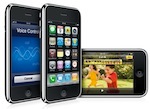
Vodafone are working with IOS, a company which will distribute the iPhone on their behalf. This is in advance of the official launch, happening in early 2010. This offer is being made to some of the Vodafone customers who registered online when they announced their intention to adopt the iPhone at the end of September . If the customer agrees to go ahead, IOS will arrange delivery of an iPhone to the Vodafone customer.
The tariffs also reveal that Vodafone are to offer a 2GB data package, twice the level offered by O2. Here are the details:
Basics: 0 minutes and 0 texts
Data allowance per month: 2GB
Free Vodafone to Vodafone calls
Contract length: 18 months
Cost of 16GB iPhone 3GS: €199
Monthly tariff: €34.99 per month
Basics: 150 minutes and 150 texts
Data allowance per month: 2GB
Free Vodafone to Vodafone calls
Contract length: 18 months
Cost of 16GB iPhone 3GS: €199
Monthly tariff: €49.99 per month
Basics: 300 minutes and 300 texts
Data allowance per month: 2GB
Free Vodafone to Vodafone calls
Contract length: 18 months
Cost of 16GB iPhone 3GS: €99
Monthly tariff: €64.99 per month
Basics: 500 minutes and 500 texts
Data allowance per month: 2GB
Free Vodafone to Vodafone calls
Contract length: 18 months
Cost of 16GB iPhone 3GS: €49
Monthly tariff: €84.99 per month
Basics: 700 minutes and 700 texts
Data allowance per month: 2GB
Free Vodafone to Vodafone calls
Contract length: 18 months
Cost of 16GB iPhone 3GS: Free
Monthly tariff: €99.99 per month
Vodafone have stated that they have a limited supply of these iPhones, and the 16GB 3GS model is the only one available. This is a limited release to those who registered early, and the full launch of the phone on Vodafone Ireland's network will around February 2010.
To compare the tariffs to those offered by O2, click here..

Vodafone are working with IOS, a company which will distribute the iPhone on their behalf. This is in advance of the official launch, happening in early 2010. This offer is being made to some of the Vodafone customers who registered online when they announced their intention to adopt the iPhone at the end of September . If the customer agrees to go ahead, IOS will arrange delivery of an iPhone to the Vodafone customer.
The tariffs also reveal that Vodafone are to offer a 2GB data package, twice the level offered by O2. Here are the details:
Basics: 0 minutes and 0 texts
Data allowance per month: 2GB
Free Vodafone to Vodafone calls
Contract length: 18 months
Cost of 16GB iPhone 3GS: €199
Monthly tariff: €34.99 per month
Basics: 150 minutes and 150 texts
Data allowance per month: 2GB
Free Vodafone to Vodafone calls
Contract length: 18 months
Cost of 16GB iPhone 3GS: €199
Monthly tariff: €49.99 per month
Basics: 300 minutes and 300 texts
Data allowance per month: 2GB
Free Vodafone to Vodafone calls
Contract length: 18 months
Cost of 16GB iPhone 3GS: €99
Monthly tariff: €64.99 per month
Basics: 500 minutes and 500 texts
Data allowance per month: 2GB
Free Vodafone to Vodafone calls
Contract length: 18 months
Cost of 16GB iPhone 3GS: €49
Monthly tariff: €84.99 per month
Basics: 700 minutes and 700 texts
Data allowance per month: 2GB
Free Vodafone to Vodafone calls
Contract length: 18 months
Cost of 16GB iPhone 3GS: Free
Monthly tariff: €99.99 per month
Vodafone have stated that they have a limited supply of these iPhones, and the 16GB 3GS model is the only one available. This is a limited release to those who registered early, and the full launch of the phone on Vodafone Ireland's network will around February 2010.
To compare the tariffs to those offered by O2, click here..
Tesco UK to sell iPhones
25/11/09 12:45
Tesco in the UK have announced that they are to begin to sell iPhones in a deal with O2. Tesco Mobile, the mobile phone division of th well-known supermarket chain, will start to sell iPhone 3G and 3GS handsets “shortly”. This brings the number of sellers of iPhones to three, with O2 and Orange already selling iPhone sin the UK.

Tesco’s website has further details.
.
Tesco’s website has further details.
.
Securing a Jailbroken iPhone
24/11/09 22:09
In the last few weeks, there have been a number of iPhone “worms” which can effect jailbroken devices. Now to be clear, this does not effect people with an official O2/Orange iPhone. This problem is only relevant to those who have hacked their iPhone, normally to use their phones on other networks.

For example, any iPhone with an application called Cydia or Icy installed has been jailbroken, and this can open your iPhone up to hackers. This is because access to your iPhone may be set to use a standard password, and one which is widely known and being exploited by the hackers.
However iPhone Central have provided a clear and easy way to change the “root” password for your device, and we would strongly recommend that any users with a jailbroken phone follow these steps..

For example, any iPhone with an application called Cydia or Icy installed has been jailbroken, and this can open your iPhone up to hackers. This is because access to your iPhone may be set to use a standard password, and one which is widely known and being exploited by the hackers.
However iPhone Central have provided a clear and easy way to change the “root” password for your device, and we would strongly recommend that any users with a jailbroken phone follow these steps..
Mac Information Christmas Gift Guide
11/11/09 13:24
We have put together a series of items which may help with your Christmas gift selection. We have recommended our favourite Mac, iPod and other accessories.


These ideas are based on products we have bought in 2009 and those we have set up with our clients.
Click here to see the 2009 Christmas Gift Guide.
.


These ideas are based on products we have bought in 2009 and those we have set up with our clients.
Click here to see the 2009 Christmas Gift Guide.
.
Vodafone to sell iPhone in Ireland and the UK
29/09/09 16:45
The news that Vodafone UK and Ireland will begin to sell the iPhone in the new year must come as good news to many people. Orange UK is also planning to join the party, and this will hopefully inject a good element of competition into the market.

We have had a number of clients who have been reluctant to switch to get their hands on an iPhone, and in our own case, the O2 network reception is very poor at our office. So the idea of staying with Vodafone and finally being able to upgrade to an iPhone is good news.
.

We have had a number of clients who have been reluctant to switch to get their hands on an iPhone, and in our own case, the O2 network reception is very poor at our office. So the idea of staying with Vodafone and finally being able to upgrade to an iPhone is good news.
.
O2 announce iPhone 3G S prices for Ireland
18/06/09 21:45
Dates for iPhone 3G S launch, inc. Ireland
09/06/09 15:51
Apple launch new iPhone 3G S & 3.0
09/06/09 15:07
Apple have launched the new iPhone 3G S, which is due to go on sale later this month. The new phone is faster than its predecessor, the iPhone 3G, and incorporates a new video and stills camera. It also has voice controls for making calls, a built in compass for sat nav software and other apps, and comes with the new 3.0 OS.
 .
.
 .
.Review: Quickoffice Files
07/05/09 15:34
Mac Information Guide: Using an iPhone Abroad
20/04/09 14:50
All you need to know from the iPhone event...
19/03/09 12:59
- Here is a run-down of the announcements from the iPhone 3.0 event this week:

- iPhone now on sale in 80 countries, with China being probably the biggest gap right now.
- 13.7m iPhones sold in 2008
- 17m iPhones sold to end of 2008
- iPhone and iPod touch run iPhone OS- so 30m devices now run this OS
- 800,000 downloads of iPhone SDK
- 50,000 iPhone developers now signed up to Apple Developer program
- 60% did not develop for Apple before this
iPhone update plugs many gaps
19/03/09 12:42


